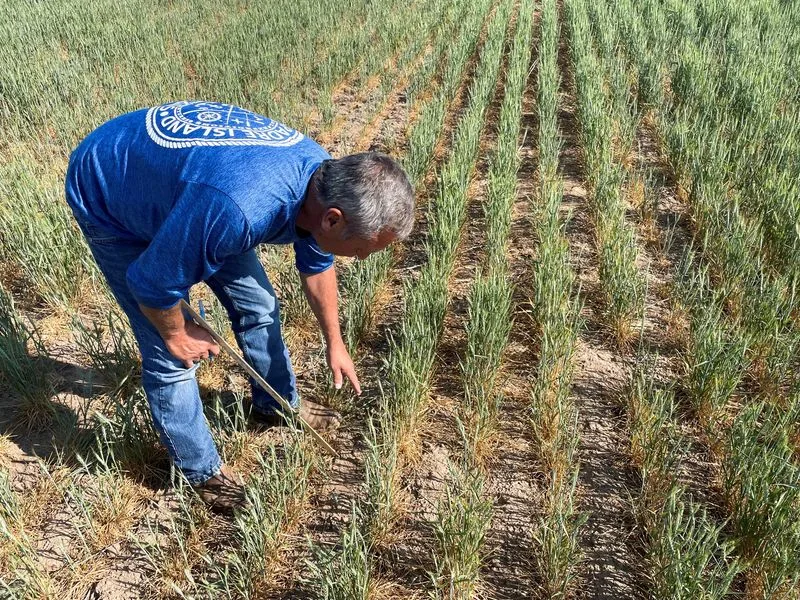As expected, the results of the 2023 Hard Winter Wheat Tour the week of May 15 confirmed the extremely short wheat crop in Kansas and surrounding states. Typically, the market reaction would be bullish. But 2023 is not a typical year, and the volatile uncertainty of the Black Sea conflict once again overshadowed basic supply and demand factors.
After following six routes throughout central and western Kansas, far southern Nebraska and far northern Oklahoma, for three days, the average calculated yield average for fields that will be harvested was 30 bushels per acre (bu/a). Kansas Wheat reported that the official tour projection for total wheat production in Kansas is 178 million bushels (4.85 million metric tons) compared to the 5-year average of 303 million bushels.
In spite of that bullish news, the latest extension of the Black Sea Grain Initiative pushed markets down. From May 15 through the end of the tour May 18, the HRW July futures contract lost $0.41. July hard red spring futures lost $0.45 and July soft red winter was down $0.49.

Gary Millershaski, a farmer and scout on the Wheat Quality Council’s Kansas wheat tour, inspects winter wheat stunted by drought near Syracuse, Kan. Photo Copyright Reuters.
People Wanted to See This Crop
The annual Wheat Quality Council (WQC) winter wheat tour always attracts the market’s attention, this year even more so. More than 100 hard red winter wheat crop stakeholders participated, up from about 80 “scouts” in 2022, perhaps to see for themselves just how bad the crop is in the country’s leading hard red winter (HRW) wheat producing state.
“There’s just a general increase in interest this year,” WQC Executive Director Dave Green said to Progressive Farmer/DTN before the tour. “A lot of the big [milling and wheat food] companies want to have people on the ground and not just hear about it from someone else. People want to see this crop.”
Based on May 1 data, USDA estimated total 2023 U.S. HRW production at its lowest level since 1957/58. That includes USDA’s estimated average of 29 bu/a in Kansas. In fact, the wheat tour estimated average yield at 29.8 bu/a on Day 1 and 27.5 bu/a on Day 2 in the hard-hit western region.
Abandonment X-Factor
Wheat tour scouts were instructed to only calculate yield estimates for fields that have the potential to be harvested for grain, and not to calculate yields for abandoned fields. Kansas Wheat CEO Justin Gilpin noted that the 178 million bushel Kansas production estimate is a compilation from field evaluations throughout all 3 days on the tour, individual estimates of abandonment, and potential from this point until harvest. Estimates from scout estimates are pooled and averaged and that is the final production number that the WQC Tour issues at the end of the tour.
USDA NASS on May one estimated Kansas wheat production at 181 million bushels in its May Wheat Outlook. Assessing abandonment, it pegged the harvested-to-planted ratios for Kansas at 81% compared to a long-term average of 93%. Including Oklahoma at 47% (with an average yield potential of 23 bu/a), Texas at 30%, and Colorado at 73%, all are historically low.
Kansas Wheat pointed out that the wheat tour captures a moment in time for fields across the state that are still 3 to 6 weeks from harvest. The WQC coordinates this effort by breeders, producers, and processors to improve wheat and flour quality. The primary goals of the tour are to make connections within the wheat industry, allow participants to meet wheat farmers and see the growing crop, and to highlight the agriculture industry.
Photo at the top of this page from Twitter shows a field near Haven, Kan., with an estimated yield potential of 10 b/ac. Photo Copyright, Corbin Catt/Catt & Crew Farms. See more photos and other information by searching #wheattour23.

